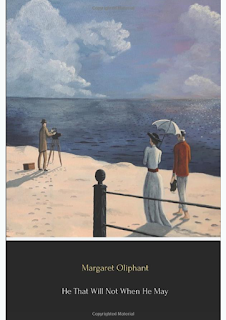Art: Make it Personal
BE DISTINCTIVE.
If you say the names: Van Gogh...Picasso...Monet...automatically images of their 'style' of work will come to mind. Even a relative art history novice will be able to easily identify their work. That's because they've achieved that thing that all artists must to be remembered: distinctiveness.
As I ventured out into the world of exhibiting my art alongside my peers, one thing became immediately apparent. The world is absolutely full up with amazing artists. In any large community, there are literally thousands of very good artists, plus an astonishing number of what I would call excellent artists. These are people who can perfectly render just about anything, from a tiger face to a wave cresting on the shore, in hyper realistic detail.
Now, I consider myself to be a better-than-average renderer, if compared to a randomly selected fellow hominid plucked from a crowd. But I knew almost immediately, as I marvelled at the work of some of my peers in the adjoining booths at art shows, that I would never win on rendering skill alone. That isn't to diminish the value in honing one's rendering skills. The ability to accurately render enables you to better translate your concepts to the canvas. But on its own, it ain't enough. Especially ever since these things called "cameras" were invented and relieved artists of their primary task of capturing our surroundings in two dimensions. That ensuing freedom has enabled artists to explore all sorts of styles of representation, and the result is that creating memorable art is no longer simply the function of a deft drawing hand. Concept and idea now matter every bit as much as painting skill.
It's a moot point that the most famous painting of a human ever is the Mona Lisa. Just look at the ridiculous crowds which dictate the ridiculous display measures taken by the Louvre where it resides.
And while the Mona Lisa isn't what I'd call hyper-realistic, it is conventionally painted by a confirmed master.
But after DaVinci's piece, a fair case could be made that the second most famous painting of a human in history is Edvard Munch's "The Scream".
The scream has shown up in literally thousands of media iterations over the years. Documentaries have been made about the bizarre allure of Munch's defining work.
I'll never forget my own stunned reaction to it when it flashed on the slide screen in my high school art history class. And yet, if you take a good look at it, the piece is crudely, dare I say, laughably rendered. A seven-year-old could easily have drawn it. So why does this piece have such a hold?
In part it upset the apple cart that was the art world of its time. Impressionism was well underway when Munch painted "The Scream", but the world was not yet ready for the devolution of art to this degree, and Munch was considered a madman for painting such a thing.
But beyond mere shock value, Munch had landed on something that would endure for reasons beyond its gut-punch blow to convention. This painting (and indeed all his work) resonated on an emotional level that struck a universal chord. How did he do this? Well, to get back to the premise of this blog, he made it personal. He projected his own raw emotions and feelings into the very paint that swirled so madly across the canvas. And because he felt it, we felt it too.
Munch's personal history was a turbulent one, filled with bouts of debilitating mental illness and tragedies like the premature death of his beloved sister. Raw emotion issue forth from his canvases in a way that is matched by few others.
Now, I'm not suggesting that Munch is everyone's cup of tea. But his distinctiveness is undeniable, and it's entirely a function of him personalizing his art. Others of that time period had done the same. The swirling chaotic colours of Van Gogh represent his own grapples with mental illness.
Monet was going blind towards the end of his life, which was reflected in the increasingly deconstructed forms of his famous garden in Giverny.
In more recent times, Alex Colville's work is known for its spare, eerie compositions and sense of doom or death-like stillness. This has been attributed to the fact that Colville was a war artist who was present at the liberation of the Belsen concentration camp. The horrors witnessed thereafter permeated his work.
I get asked all the time about my own influences. For starters, I've been a lover of history for as long as I can remember. The other factor is that my childhood was spent in Ottawa, a city that exists in the icy grip of winter for almost half the year. I spent much of my childhood in the dark, quiet embrace of snowy nights. For me, there's something about winter night scenes that are restful, mysterious, nostalgic, and ultimately peaceful.
But the one thing you have that nobody else does is yourself. Every human is unique, in part because of how we're born, but also because of experiences lived. So take those things that are important and special to you, and put them out there on the canvas. In short, make it personal. A distinctive style, unique to you and you alone, is sure to be the result.




















Comments
Post a Comment